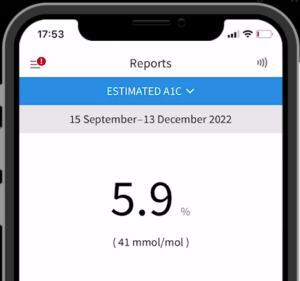
What Is HbA1c? 3 Ways To Improve High HbA1c
Hemoglobin is a protein on the surface of red blood cells. Its main function is to carry oxygen, transport it to various tissues and organs of the body, and take away carbon dioxide. When glucose enters the blood, it will combine with hemoglobin, and the combined hemoglobin is glycosylated hemoglobin HbA1C.
What is HbA1c?
Generally, the lifespan of red blood cells is about 4 months, so glycosylated hemoglobin can reflect the blood sugar in the past 2 or 3 months. It only takes 3 months to test glycosylated hemoglobin on average, but it cannot be used as the only indicator, and it must be combined with fasting blood sugar before meals and blood sugar after meal, evaluate together
According to the Diabetes Medical Calculation, glycosylated hemoglobin (HbA1C) can also be used to convert the average blood sugar in the past 3 months. The formula is as follows:
Average blood sugar level in the past 3 months (mmol/L) = 10.929 * (A1C(%) – 2.15)
For example, when the glycated hemoglobin (HbA1C) is 5.9%, the average blood sugar level in the past 3 months is about: 10.929 x (A1c(%)-2.15) = 10.929 x (5.9-2.15) = 41
Generally, the normal value of glycosylated hemoglobin is between 4.0 – 5.6%. If the value is between 5.7 – 6.4%, it is on the high side, and there is a risk of developing diabetes. If the value is higher than 6.5%, it is diagnosed as diabetes.
As mentioned above, glycosylated hemoglobin (HbA1c) is generally used, together with the values of fasting blood sugar before meals and blood sugar after meals, to determine whether you have diabetes. The blood sugar before meals reflects the blood sugar level under normal circumstances, and the blood sugar after meals is to understand the efficiency of cells to use insulin to help glucose enter the blood after eating.
| HbA1c | Sugar Level Before Meal | Sugar Level After Meal | |
| Normal Value | 4.0~5.6% | < 5.6 mmol/L | < 7.8 mmol/L |
| Pre-diabetes | 5.7~6.4% | 5.6~7.0 mmol/L | 7.8~11.1 mmol/L |
| Diabetes | >6.5% | >7 mmol/L | >11.1 mmol/L |
Hyper Glycated hemoglobin (HbA1c) may be pre-diabetes. As long as it is controlled as soon as possible, diabetes can be avoided. There is a study comparing people who do a good job of prevention and people who don’t. Looking at the time they developed diabetes, it turned out there was a difference of 17 years between the two. One person has just developed diabetes, and the other has to rely on insulin injections to control it. The new consensus is that exercise and diet control can delay the onset of diabetes by up to 15 years. Even if you get it, it is easier to control the disease than those who do not do preventive work.
How to improve the control of high glycated hemoglobin?
-
- Diet – reduce sugar, sugar food and calorie intake, eat more vegetables, and implement a sugar-abstaining diet if necessary.
- Exercise – Exercise improves insulin sensitivity and insulin utilization. 150 minutes of moderate-intensity exercise per week is recommended, paired with weight training.
- Weight loss – You must lose 7% of your original body weight in half a year. Studies have also shown that as long as you lose 5-10% of your original body weight, you can reduce the risk of diabetes by 58%. It is important to reduce your belly fat, as it reflects that you may have a chance of fatty liver, fatty pancreas, which account for insulin resistance.
How to check HbA1c all the time
Visit: The Best Device To Check HbA1cFor Diabetes — Abbott FreeStyle Libre 2














